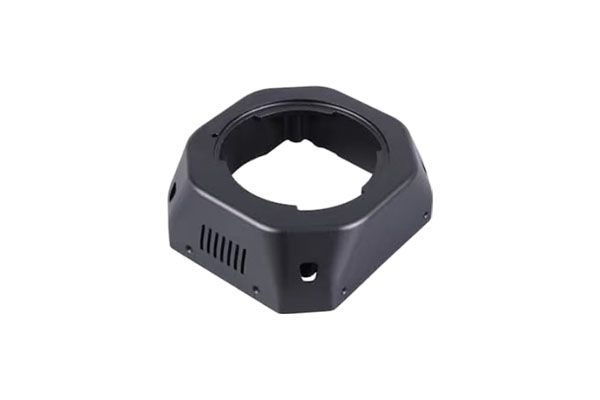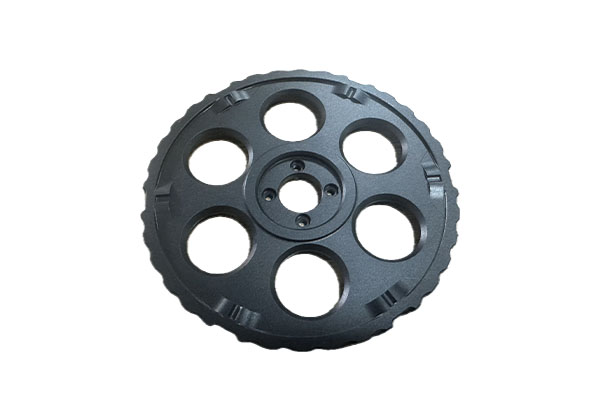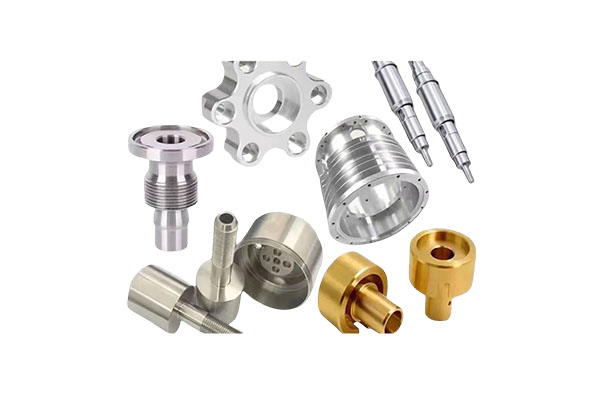Analysis and control of thermal deformation of precision turning and milling multi-Axis machining parts in CNC turning and milling compound machining center
Release Time : 2025-02-04
In the process of precision turning and milling multi-axis machining, thermal deformation is an issue that cannot be ignored. CNC turning and milling compound machining center integrates multiple machining functions such as turning and milling, and can realize efficient and high-precision machining of complex parts. However, due to the heat generated during the machining process, the workpiece and machine tool parts often undergo thermal deformation, which affects the machining accuracy and product quality.
The thermal deformation of precision turning and milling multi-Axis machining parts is mainly caused by temperature changes, which causes the size or shape of the workpiece or machine tool parts to change. In CNC turning and milling compound machining centers, the heat sources mainly include cutting heat, friction heat of kinematic pairs, and heating of the internal power source of the machine tool. These heats will cause the temperature of the workpiece and machine tool parts to rise, which in turn causes thermal expansion and deformation.
In order to reduce the influence of thermal deformation of precision turning and milling multi-Axis machining parts on machining accuracy, a series of control measures need to be taken. First of all, the heat generation during the cutting process can be reduced by optimizing the machining process parameters. For example, reducing cutting speed, adjusting feed rate and using multiple shallow cutting methods can effectively reduce heat generation. Secondly, an efficient coolant system can be configured to ensure that the coolant can evenly and fully cover the workpiece and tool surface, and quickly take away the cutting heat. In addition, a thermally symmetrical structure design can be used to improve the heat dissipation performance of the machine tool and reduce thermal deformation caused by temperature gradient.
In addition to the above measures, thermal displacement compensation technology can also be used to further improve the machining accuracy of precision turning and milling multi-Axis machining parts. By establishing a thermal deformation prediction model, the temperature changes of the machine tool and the workpiece are monitored in real time, and the machining path is compensated in real time according to the prediction results, thereby effectively reducing the impact of thermal deformation on machining accuracy.
In summary, the thermal deformation of precision turning and milling multi-Axis machining parts in CNC turning and milling composite machining centers is a complex problem, but by optimizing machining process parameters, configuring an efficient coolant system, adopting a thermally symmetrical structure design and using thermal displacement compensation technology, thermal deformation can be effectively controlled to improve machining accuracy and product quality.
The thermal deformation of precision turning and milling multi-Axis machining parts is mainly caused by temperature changes, which causes the size or shape of the workpiece or machine tool parts to change. In CNC turning and milling compound machining centers, the heat sources mainly include cutting heat, friction heat of kinematic pairs, and heating of the internal power source of the machine tool. These heats will cause the temperature of the workpiece and machine tool parts to rise, which in turn causes thermal expansion and deformation.
In order to reduce the influence of thermal deformation of precision turning and milling multi-Axis machining parts on machining accuracy, a series of control measures need to be taken. First of all, the heat generation during the cutting process can be reduced by optimizing the machining process parameters. For example, reducing cutting speed, adjusting feed rate and using multiple shallow cutting methods can effectively reduce heat generation. Secondly, an efficient coolant system can be configured to ensure that the coolant can evenly and fully cover the workpiece and tool surface, and quickly take away the cutting heat. In addition, a thermally symmetrical structure design can be used to improve the heat dissipation performance of the machine tool and reduce thermal deformation caused by temperature gradient.
In addition to the above measures, thermal displacement compensation technology can also be used to further improve the machining accuracy of precision turning and milling multi-Axis machining parts. By establishing a thermal deformation prediction model, the temperature changes of the machine tool and the workpiece are monitored in real time, and the machining path is compensated in real time according to the prediction results, thereby effectively reducing the impact of thermal deformation on machining accuracy.
In summary, the thermal deformation of precision turning and milling multi-Axis machining parts in CNC turning and milling composite machining centers is a complex problem, but by optimizing machining process parameters, configuring an efficient coolant system, adopting a thermally symmetrical structure design and using thermal displacement compensation technology, thermal deformation can be effectively controlled to improve machining accuracy and product quality.







